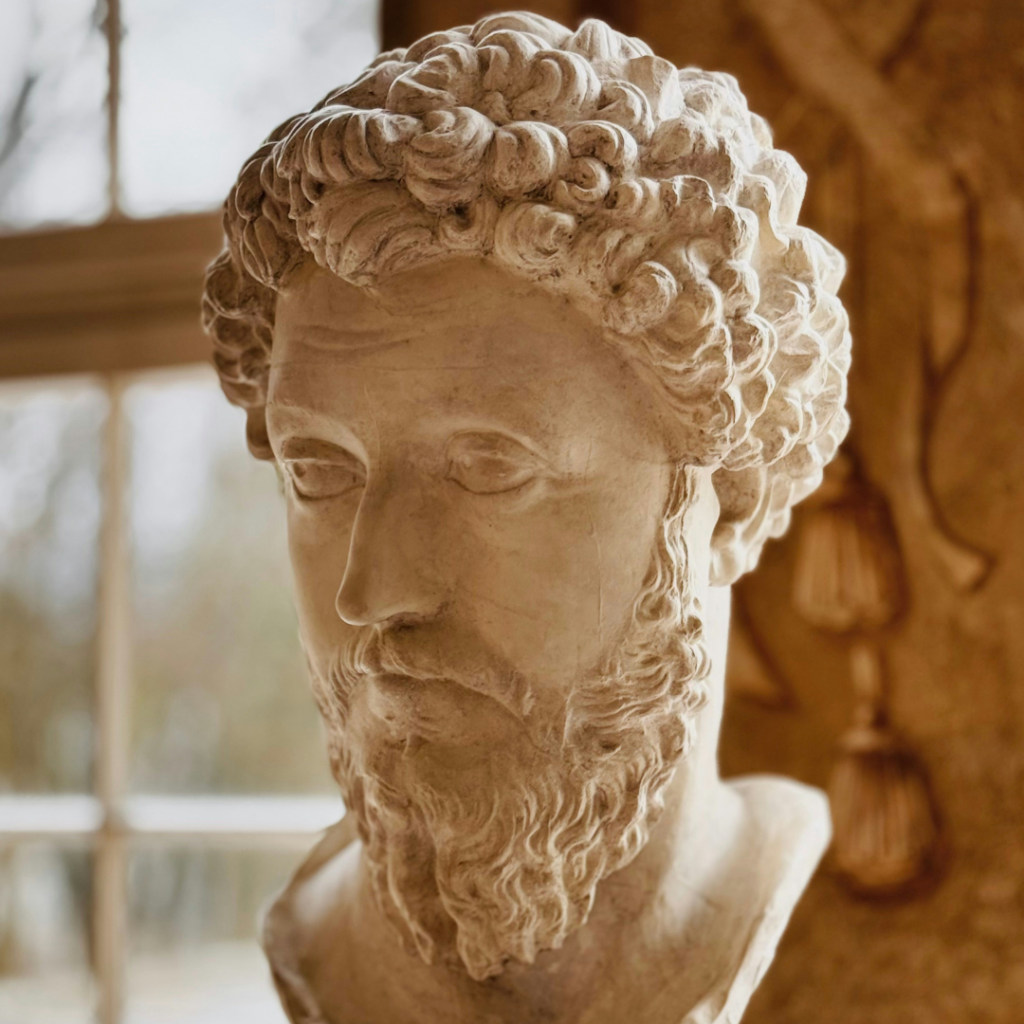Introduction: Why Become More Stoic?

What is the advantage of becoming more Stoic? Let’s bust a common myth about Stoicism right now; it won’t turn you into an emotionless rock. In fact, when practiced in the right way, it will give you more joy, peace, and gratitude for yourself and the world around you. Starting that journey is what we are all about here.
We have all faced stressful situations in our life. Being criticized by a boss at work, getting stuck in traffic to go meet that boss, plans canceled at the last minute, relationship turning sour and ending. How we react to these situations is up to us. We can lean towards feeling frustrated, anxious, or angry, and you’re not alone in this. But what if there was a way to remain calm, composed, and in control, no matter what happens?
Do you need some support on your journey, book a free consultation with one of our Stoic coaches.
This is where Stoicism comes in. A philosophy developed over 2,000 years ago, Stoic philosophy provides timeless wisdom for mastering your emotions, developing resilience, and focusing on what truly matters. In this guide, you’ll learn practical steps to cultivate a Stoic mindset and apply it to your everyday life.
1. Understand the Core Principles of Stoicism
To make Stoicism your philosophy of life, you must first understand its foundational principles. Stoic philosophy can be summed up like this: Be virtuous in all your actions, live in accordance with Nature, examine your impressions, and you will reach Eudaimonia, the good spirit/soul state. While the philosophy has a lot more to offer, two key principles are “Virtue is the only good” and this can be divided into the four cardinal virtues. Then there is the Dichotomy of Control, which we will look at in a bit:
The Four Stoic Virtues:
- Wisdom: The application of our experiences and wisdom to make rational and logical choices.
- Courage: Undertaking the right action even if they are challenging or difficult.
- Justice: Acting with fairness and integrity to yourself and the cosmos.
- Temperance: Practicing self-discipline and moderation.

The Dichotomy of Control
One of the most impactful Stoic concepts comes from Epictetus, who said:
“Some things are up to us, and some things are not.” — Epictetus, Enchiridion, 1
The Dichotomy of Control teaches us to focus only on what we can control, which are our thoughts, actions, and attitudes. While letting go of everything outside our influence, such as our bodies, other people’s opinions, external events, or past mistakes. You can read more about the concept of control here.
2. Practice Voluntary Discomfort
Seneca, a famous Stoic philosopher, believed in practicing hardship to build mental resilience. He advised:
“Set aside a certain number of days, during which you shall be content with the scantiest and cheapest fare, with coarse and rough dress, saying to yourself the while: ‘Is this the condition that I feared?’”
Seneca, Moral Letters, Letter 18.5
How to Apply This Today:
- Take cold showers
- Fast for a short period
- Go without unnecessary comforts (e.g., using public transport instead of driving, sleeping on the floor for a night).
- Disconnected from the internet and social media
These small acts of discomfort help prepare you for real hardships in life, making you mentally stronger and less attached to material comforts. They will also show you that life will be fine without these comforts and that you are more resilient than you believe.
3. Develop Emotional Resilience
A key benefit of Stoicism is the ability to manage emotions effectively. Notice that it doesn’t say to remove emotions, but to manage them. Instead of reacting impulsively to situations, Stoics observe and reframe their thoughts.
Practical Steps:
- Pause before reacting. When faced with a challenging situation, take a deep breath and ask yourself: “Is this within my control?”
- Reframe negative thoughts. Instead of thinking, “Why is this happening to me?”, reframe it as “What can I learn from this?”
- Journal daily. Marcus Aurelius, the Roman Emperor and Stoic philosopher, wrote reflections in his personal journal (which later became Meditations). Try writing about your thoughts, reactions, and areas for improvement each day.

4. Focus on the Present Moment
Many people waste energy dwelling on the past or worrying about the future. Stoicism encourages living fully in the present.
Marcus Aurelius said:
“Concentrate every minute like a Roman—like a man—on doing what’s in front of you with precise and genuine seriousness, tenderly, willingly, with justice.”
Marcus Aurelius, Meditations, Book 2.5
How to Stay Present Like a Stoic:
- Practice mindfulness. Focus on your thoughts and surroundings without judgment, let the moment absorb you.
- Limit distractions. Reduce unnecessary social media scrolling and focus on meaningful activities.
- Engage fully in what you’re doing. Whether working, exercising, or spending time with loved ones, give your full attention.
5. Accept Adversity as an Opportunity
The Stoics saw challenges as opportunities for growth. Instead of resisting difficulties, they embraced them as training for the mind.
The Stoic Mindset Shift:
- Instead of: “Why is this happening to me?”
- Think: “This is happening for me – to help me grow.”
Seneca reminds us:
“You are unfortunate in my judgement, for you have never been unfortunate. You have passed through life with no antagonist; no one will know what you were capable of, not even yourself.”
Seneca, Dialogues, On Providence, 4
You can find more Seneca quotes here.
Every challenge is a chance to develop wisdom, patience, and strength, and to face them with courage.
6. Cultivate Gratitude and Contentment
Stoicism teaches that happiness doesn’t come from external success but from appreciating what you already have.
Ways to Practice Stoic Gratitude:
- Write down three things you’re grateful for each morning.
- Remind yourself that nothing is permanent. This helps you cherish the present moment.
- Appreciate simplicity. Enjoy life’s small pleasures, a good conversation, a warm drink, or a peaceful walk.
Conclusion: Start Your Stoic Journey Today

Becoming more Stoic doesn’t happen overnight, but with consistent practice, you’ll develop a stronger, calmer, and more resilient mindset.
Your Next Steps:
- Identify one Stoic practice (e.g., voluntary discomfort, journaling, reframing thoughts) and try it this week.
- Bookmark this guide and revisit it whenever you need a Stoic refresher.
- Share your experience! What Stoic practice are you implementing? Let us know in the comments.
If you’re interested in deepening your Stoic journey and applying these principles to personal challenges, consider Stoic coaching. Learn more about how it can help you gain clarity, emotional resilience, and inner peace here. If you want more support and practical guidance, tune in to the Via Stoica Podcast. You can watch us on YouTube or listen on Spotify, or Apple Podcast.


0 Comments